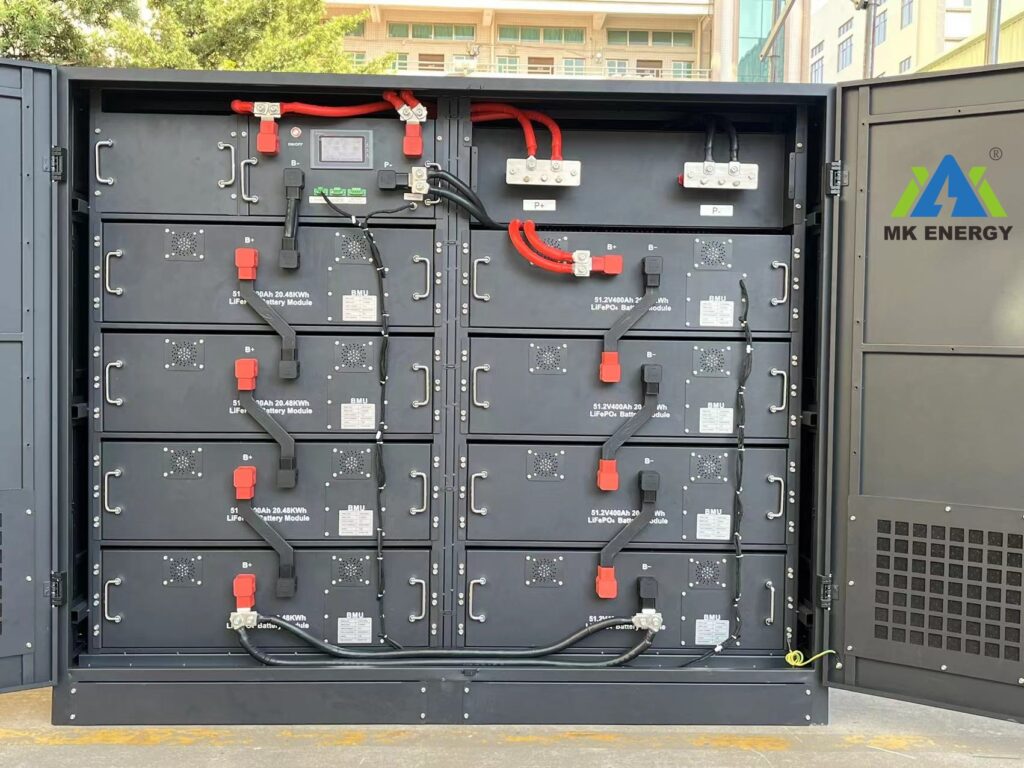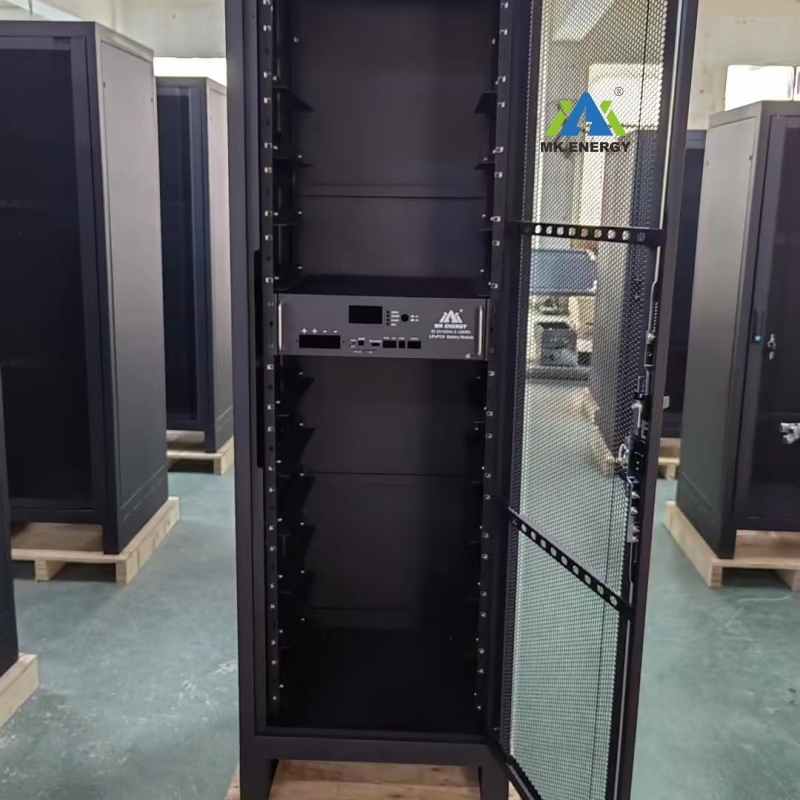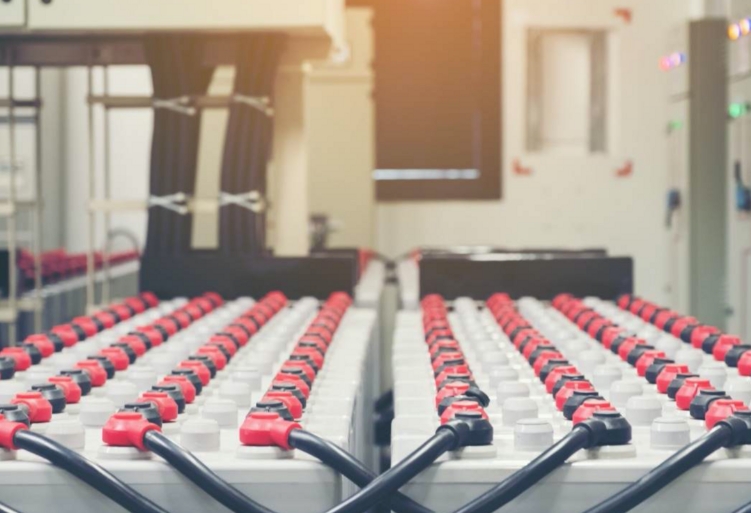Lithium battery energy storage cabinets can meet the needs of different large-scale projects and are very suitable for grid auxiliary services and industrial and commercial applications. In this guide, we will introduce the correct installation steps after receiving the lithium battery energy storage cabinet, and give the key steps and precautions for accurate installation. Proper and compliant installation ensures optimal performance and increases safety and longevity.
Choose the correct installation location for your lithium battery energy storage cabinet
First of all, we must determine the environmental conditions of the installation site to avoid extreme temperatures, such as direct sunlight, from affecting the performance and service life of the lithium battery energy storage cabinet. We also need to pay attention to the noise level generated by the cabinet during operation and avoid installing it close to residential areas. Second, choose to place them in a location that meets cabinet ventilation requirements, as adequate airflow can dissipate the heat generated during charging and discharging, thereby preventing overheating. If applicable, evaluate the installation site’s structural integrity to support the cabinet’s weight and ensure it meets seismic and building code requirements.
Ensure that the electrical connections of the lithium battery energy storage cabinet are correct
After determining the precautions for the installation site, the next step is to ensure that the electrical connections of the lithium battery energy storage cabinet are correct. We want to ensure that the voltage rating of the lithium battery energy storage cabinet matches the installation site’s electrical specifications. If it does not match, it may cause system failure or damage. High-quality cables, connectors, and terminals establish safe electrical connections between battery cabinets and other system components. And add appropriate fuses and circuit protection devices to the circuit to prevent overcurrent, overvoltage, and short circuits. It is also necessary to comply with the relevant electrical codes, standards, and regulations governing the installation of energy storage systems in your region.
Connect the lithium battery module and perform a system check!
Once they are safely installed in their designated locations, the next critical step is to connect the lithium battery modules and conduct a comprehensive system check. We need to follow the manufacturer’s instructions and the provided wiring diagram to ensure proper alignment and secure interconnection, which minimizes resistance and ensures efficient energy transfer between modules. At the same time, we also need to ensure that we can correctly connect each battery module’s positive and negative terminals to the corresponding terminals of the battery management system (BMS) or cabinet control unit.
After establishing a communication link between the lithium battery module and the cabinet control unit, we can enable real-time monitoring of battery performance, charge status, system diagnostics, proactive maintenance, and troubleshooting. Then, we must test all system components, including the BMS, cabinet control unit, communication interfaces, and safety functions, to ensure proper operation.
Configuring and programming lithium battery energy storage cabinets
After the physical installation of the lithium battery energy storage cabinet is completed, configuration and programming are required. First, the cabinet is powered on, and the control unit and battery management system are initialized. This includes checking that electrical connections are correct, verifying that components are functional, and more. Next, we need to configure the voltage and capacity settings of the lithium battery energy storage system to meet the application requirements.
Adjust voltage thresholds and capacity limits to optimize charge and discharge performance while ensuring safe operation within specified parameters. Additionally, you need to determine the operating mode of the lithium battery energy storage cabinet based on your application needs and usage patterns. At the same time, setting the charging and discharging parameters, configuring the safety and protection settings, and protecting the lithium battery energy storage cabinet from potential dangers such as overcurrent, overvoltage, and overtemperature are necessary.
Final inspection and commissioning of the system
The final inspection and debugging system of the lithium battery energy storage cabinet is the last step to ensure efficient operation after installation. This comprehensive program involves complete testing, verification of system functionality, and resolution of any issues or anomalies. Start by visually inspecting the entire energy storage cabinet, including the cabinet, battery modules, electrical connections, and related components. Check for any physical damage that may affect the integrity and security of the system. Following the assembly process, we conduct electrical testing to verify the correct voltage, current, and resistance levels throughout the system.
This is followed by functional testing to evaluate the energy storage cabinet’s ability to operate under various conditions and scenarios. Test different operating modes, charge, and discharge cycles. Battery management system calibration: Calibrate the BMS to accurately monitor and manage the state of charge (SoC), state of health (SoH), and other parameters of the lithium battery module. We must also test alarm systems and notifications to ensure that we issue timely alerts for critical events such as low battery voltage, high temperature, or system failure, facilitating the timely identification and resolution of issues.
Ultimately
Properly installing a lithium battery energy storage cabinet maximizes its performance. Following the step-by-step process outlined in this guide and adhering to safety best practices, you can ensure a successful installation that will meet your energy storage needs and serve you for years. Provide reliable operation throughout the year. If you have any problems during installation, please contact our professionals on our official website for help.




